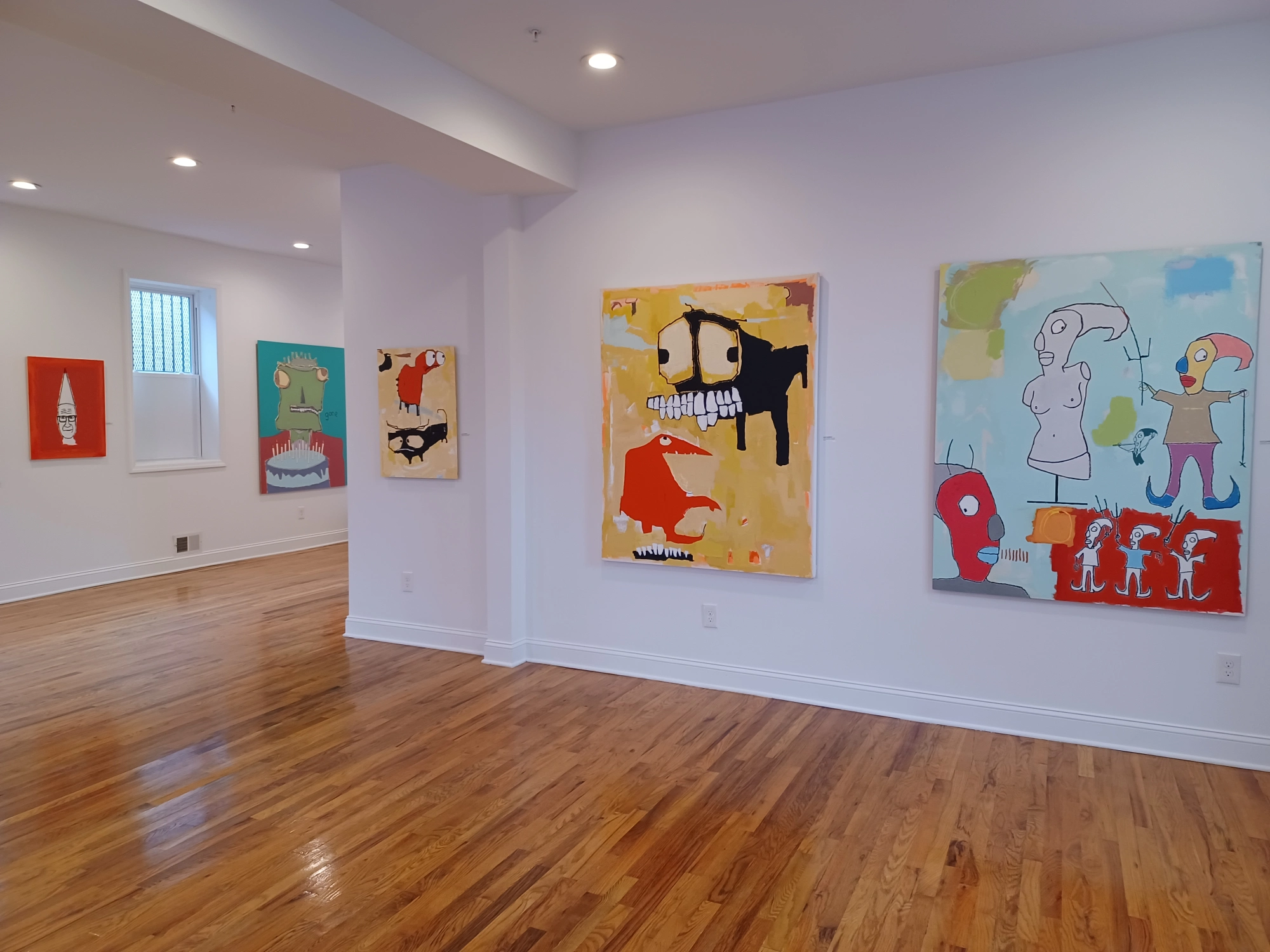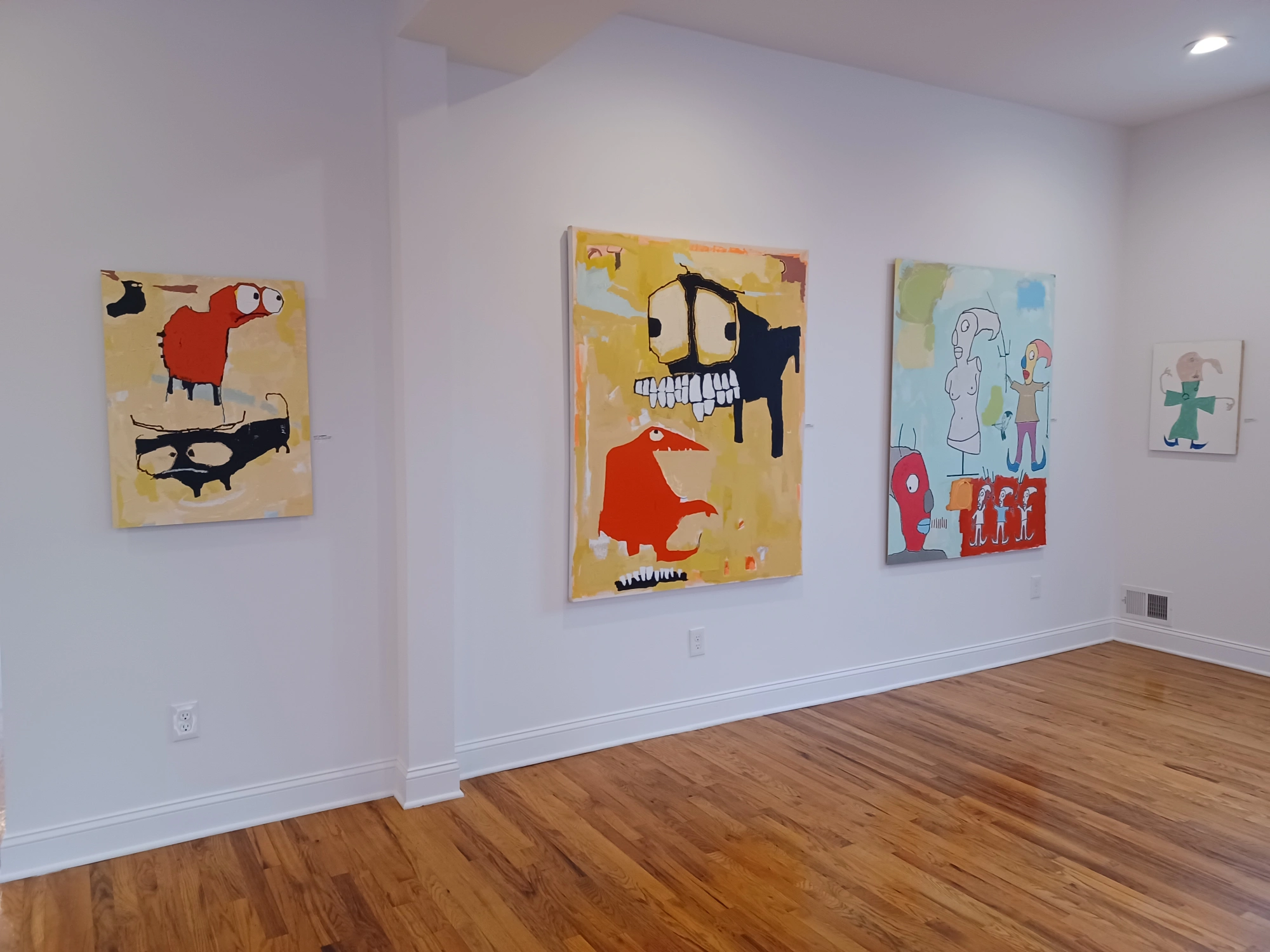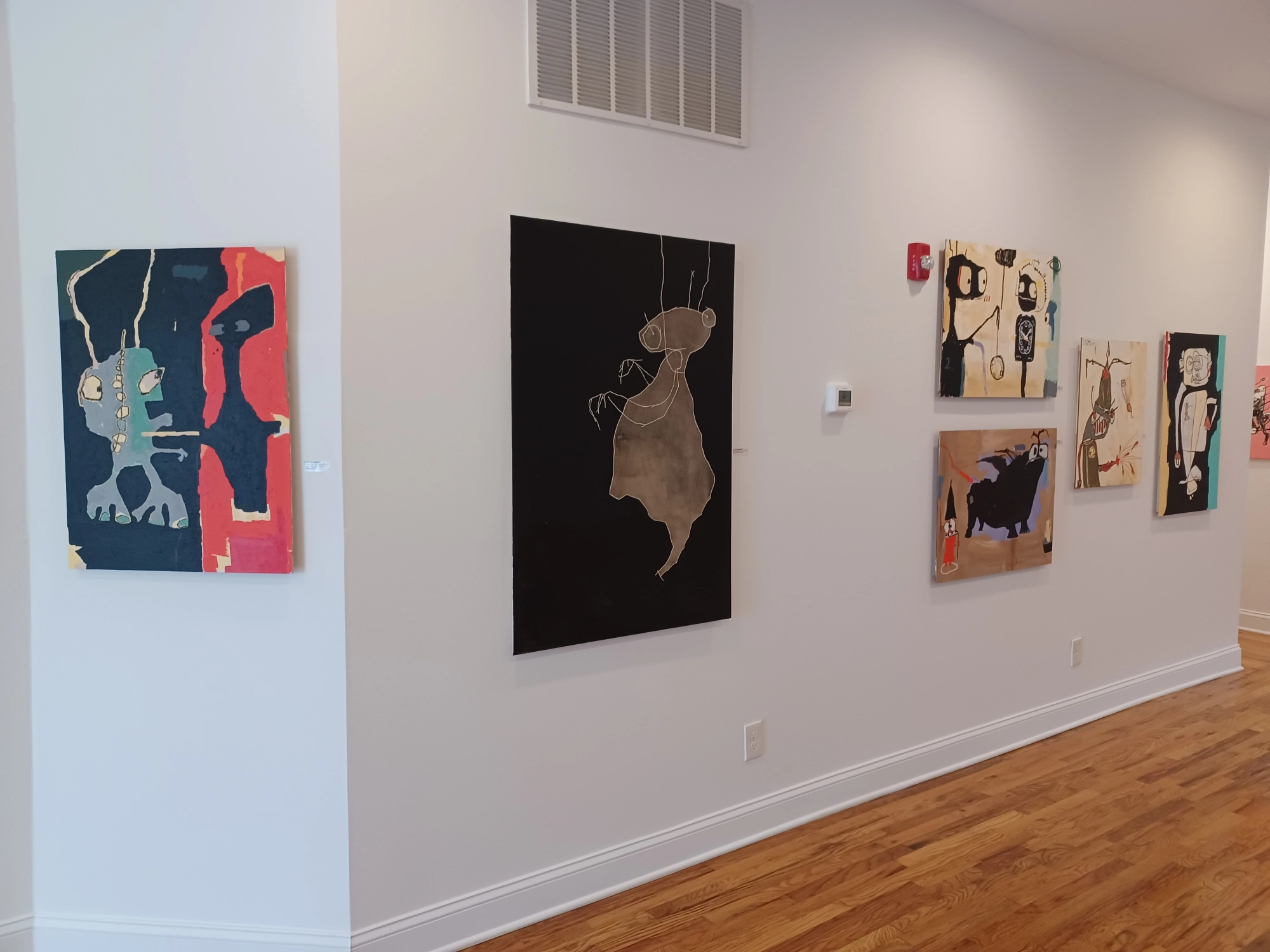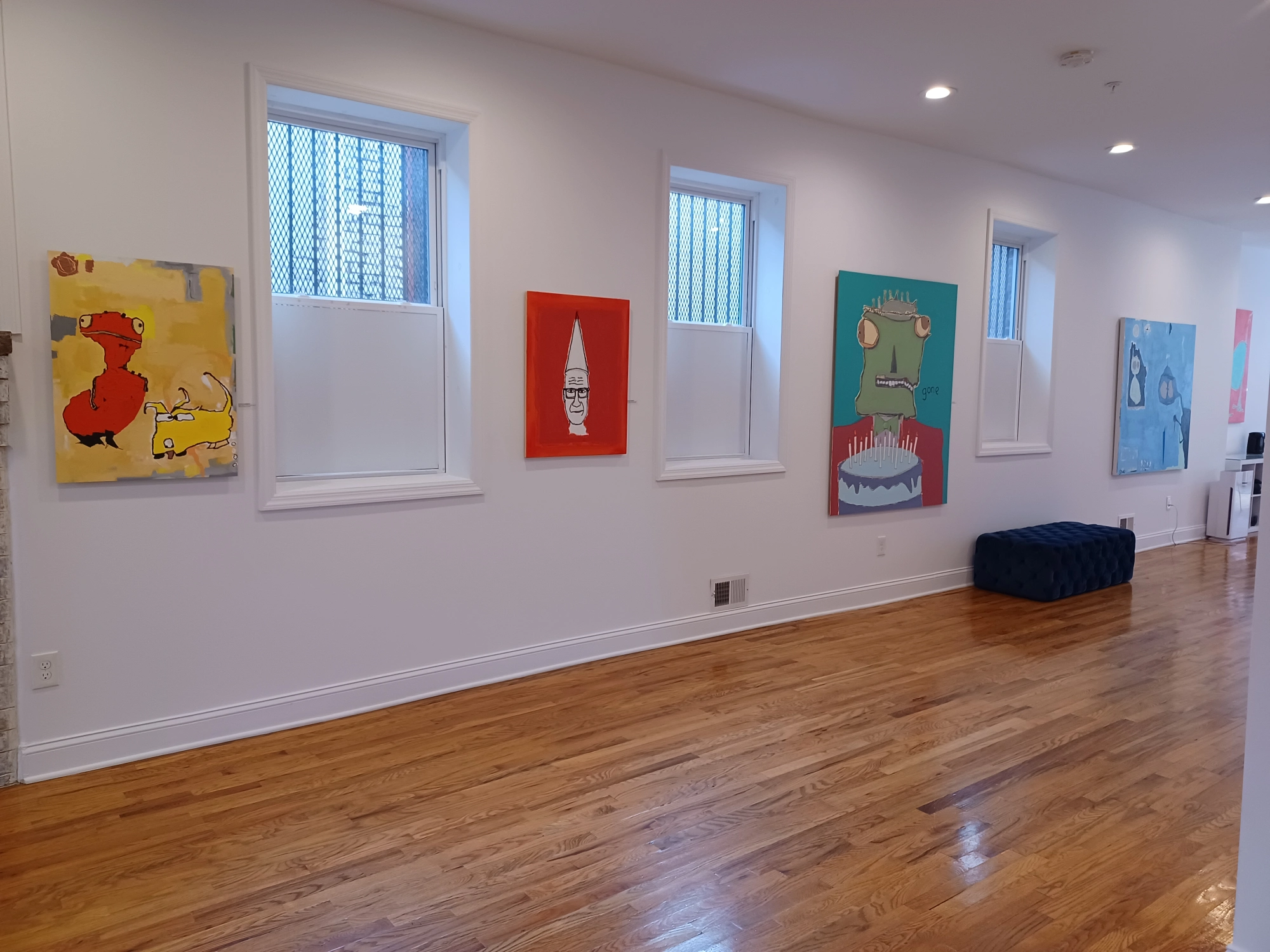SCOTT HARBISON – KITSCHY AND KAFKAESQUE
- Jan 25, 2023
- 3 min read
By Jeanne Brasile
It is difficult to determine whether Scott Harbison is exorcising demons or shaking hands with them in his solo exhibition of paintings at Akwaaba Gallery. What is clear is that he is an excellent student of 1970s and 1980s pop culture. Coming of age during this period, he soaked up the cartoons, music, and ethos of the era, deftly reconstituting an amalgam of these influences back to viewers in a pictorial format, sometimes accompanied by text. His punchy, graphic style often places crudely outlined forms against bold color fields that could easily hold their own as abstract compositions. In these indeterminate spaces that could be the stuff of fantasies or nightmares, toothy monsters carouse in bright blocks of color that evoke the feeling of a cartoon cel.
Harbison channels influences such as Bugs Bunny, The Flintstones and Beavis and Butthead cartoons, so his monsters feel at once sardonic and whimsical. How he imbues his subjects with these expressions and attitudes with a modicum of line and shape is one of the artist’s major strengths, communicating a great deal with an economy of information. It is this restraint that keeps these hyperactive paintings from becoming the peripatetic overload they might be in less accomplished hands. Harbison’s jagged gestures vibrate with so much energy that his choice to place them against largely unadorned backgrounds holds the work together, rendering his paintings both interesting and comprehensible.
The self-effacing artist paints beasts with a mischievous quality – they stare askance with bug eyes and blank stares or return the viewer’s gaze – often with silly, non-plussed or unperturbed expressions. The monsters seem symbolic, perhaps channeling the artists’ own irreverence or dis-ease. Though he modestly declares an ignorance of art history, Harbison’s figures tap into the canonical lineage of monster hood. Appearing to be lifted from the margins of illuminated Medieval manuscripts and magnified, these beasts now frolic in Harbison’s compositions. Likewise, one recurring hooligan seems as if isolated from a Hieronymus Bosch Dutch hellscape with its beak-like mouth and rounded body. Harbison says he is most often compared to Basquiat, and this relationship is most obvious, though Harbison’s figures are suggestive rather than derivative.
In the artist’s “Self Portrait,” he paints himself within a red inset framed by a less saturated hue of the same color. Depicted in a cool white tone from the neck up and outlined in black with oil stick, he crowns himself in a dunce cap. His crudely outlined face, framed with thick square glasses beneath his creased forehead, lends him the appearance of Hank Hill from King of the Hill. You’d never know how cool Harbison is by the way he depicts himself, but Hank never played at CBGB or Maxwell’s. The artist revels in his oddness, and it is endearing both in his work and his personhood.
Though a newcomer to the Newark scene, Harbison’s been making art for decades, albeit just not sharing it broadly with others. That changed during the pandemic when he bought a home in Newark and began creating in earnest during the lockdown. Scott Harbison’s paintings are what Weird NJ would be if it were art. I left the gallery feeling like I had just visited the Island of Misfit Paintings. Exiting into the crisp winter evening, I felt woozy and besotted by this Harbison’s brash brand of kitschy and Kafkaesque imagery.
Jeanne Brasile is a writer, artist and curator living and working in Essex County. She is currently the director of the Walsh Gallery at Seton Hall University.
________________
Scott Harbison “I’ve Created a Monster” is on view at Akwaaba Gallery at 509 South Orange Avenue through February 5.
All images courtesy of Akwaaba Gallery
SHARE THIS:












Comments